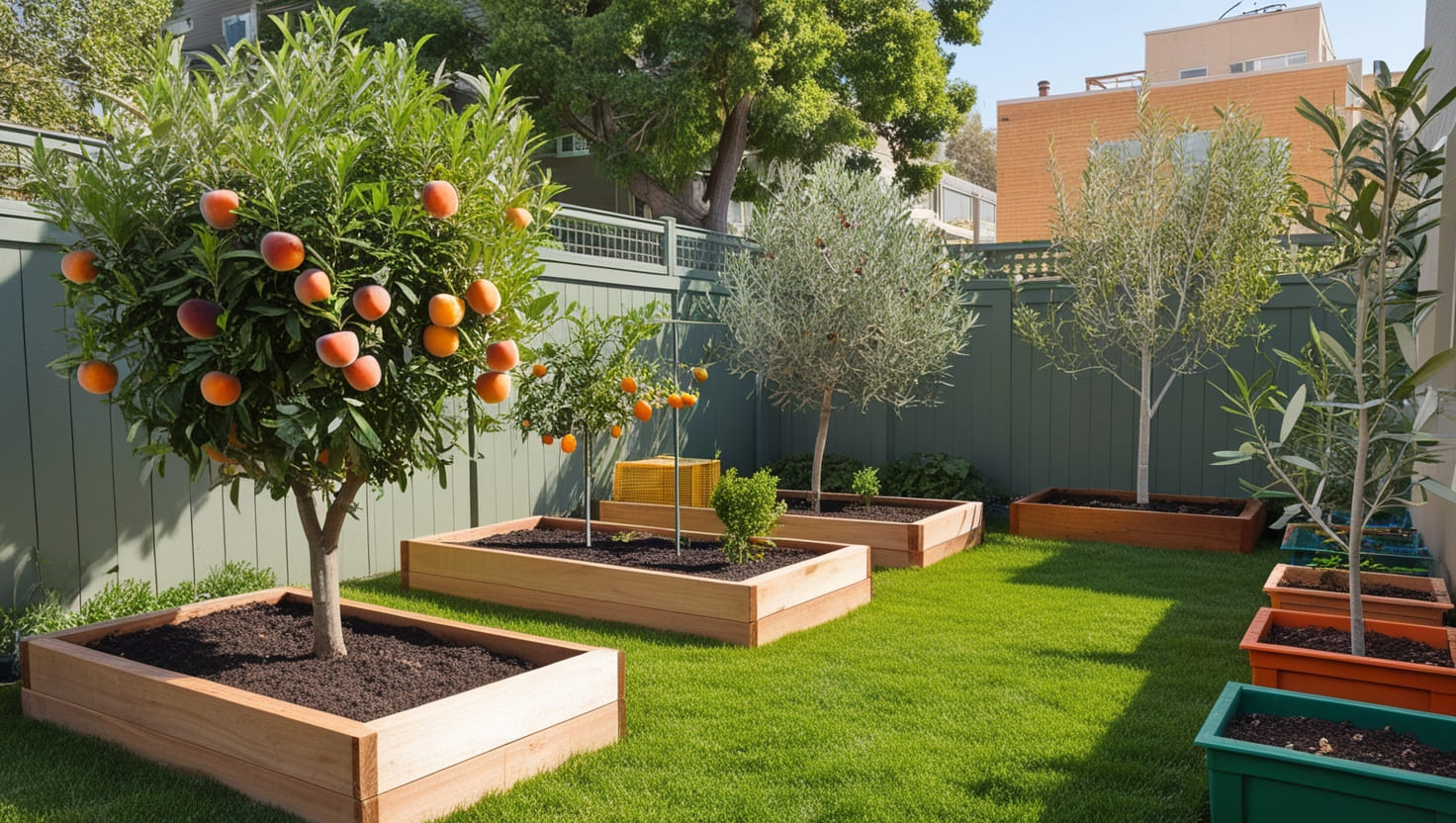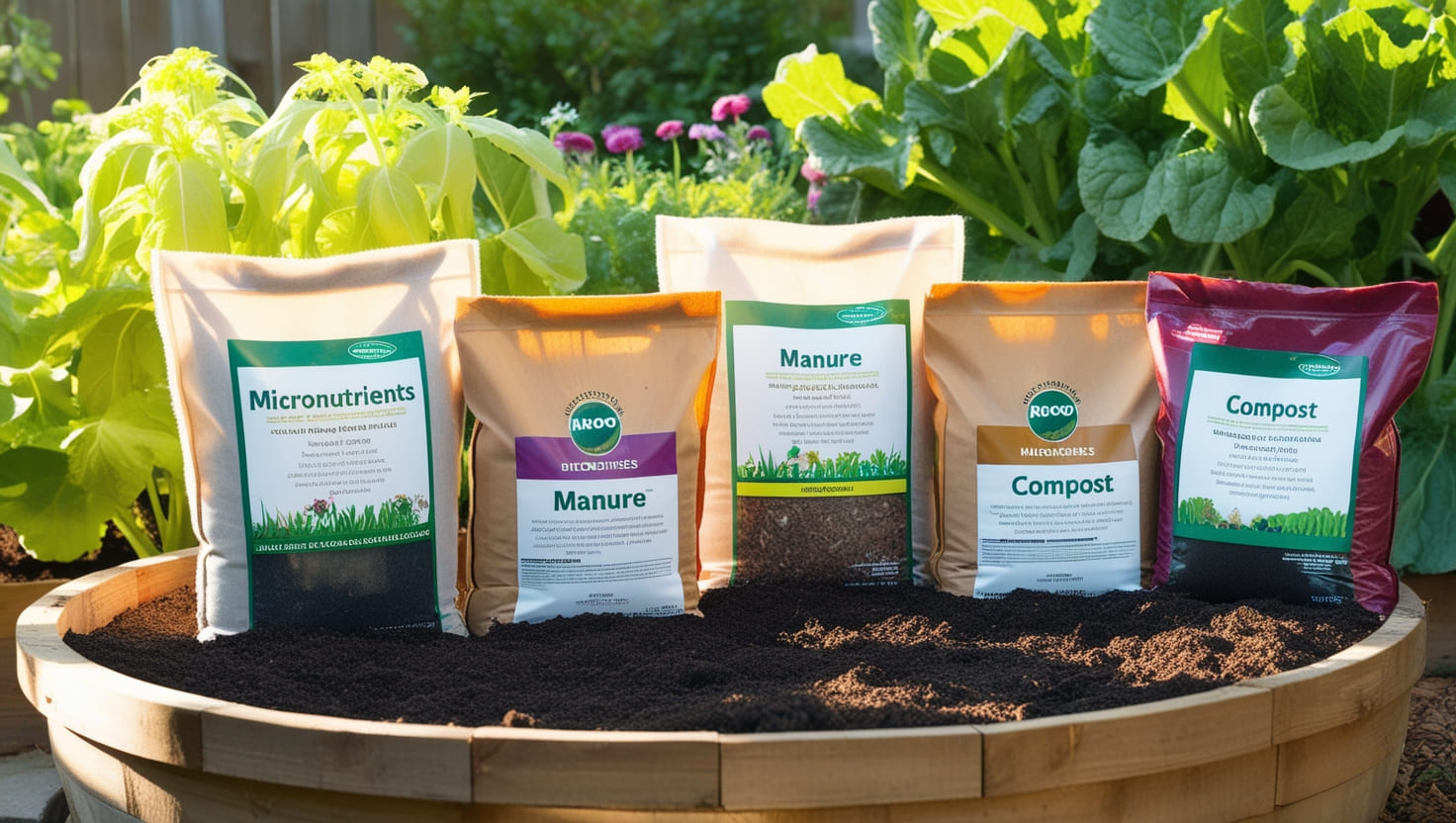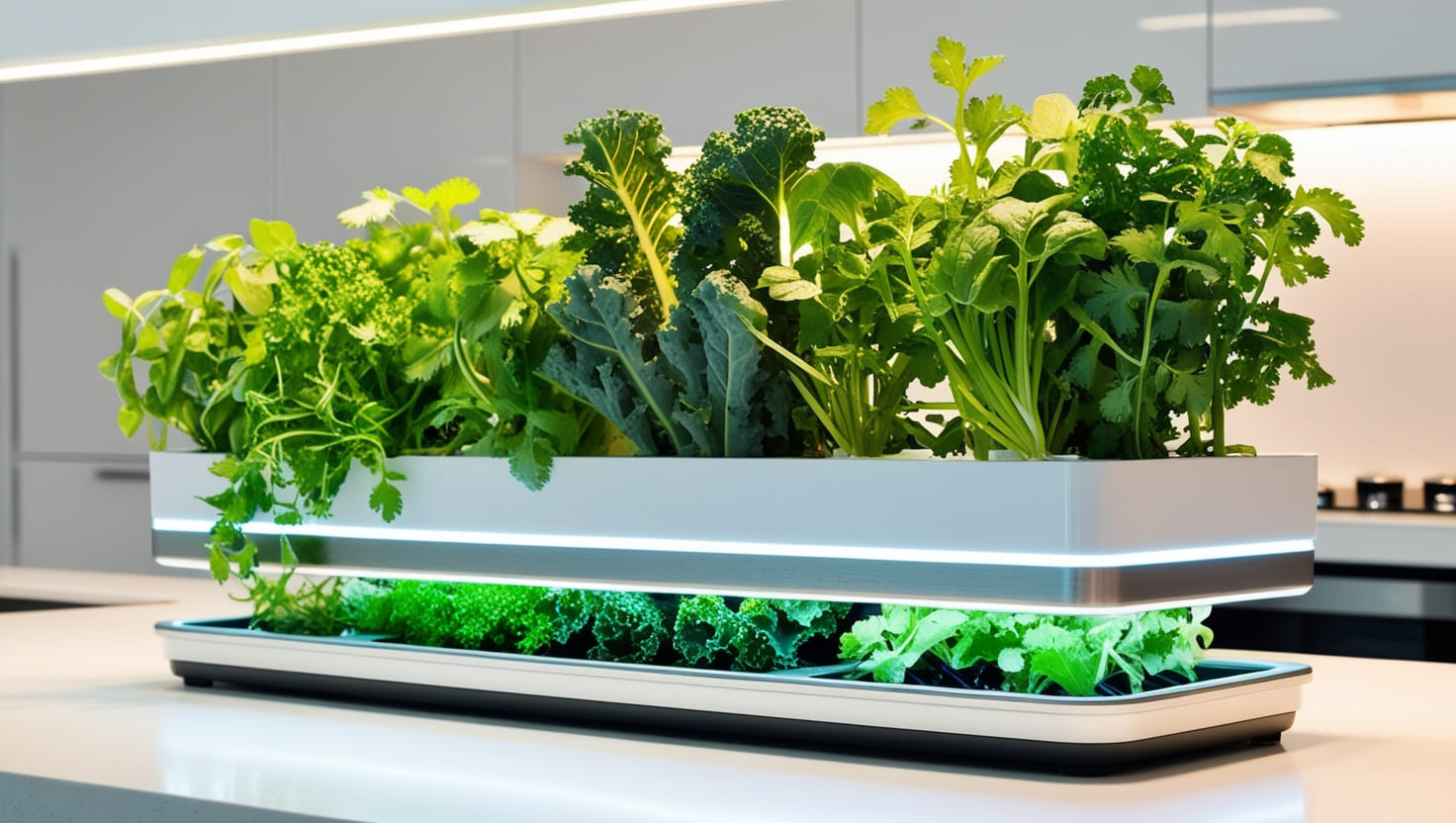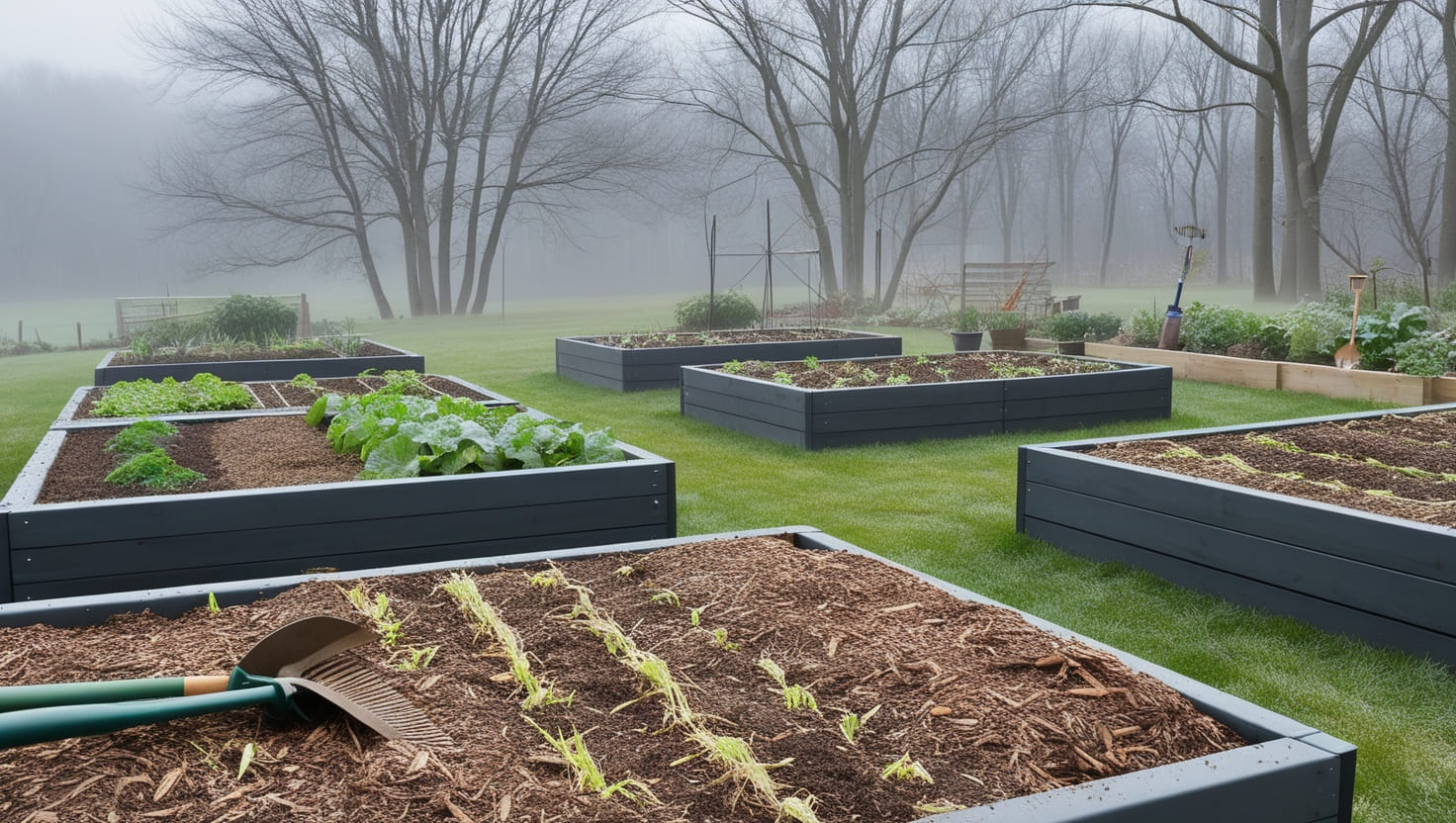
Growing scabiosa with our guide!
Looking to fill your garden with vibrant blooms while attracting pollinators like butterflies and bees? Scabiosa, also known as pincushion flowers, are the perfect addition to any garden. These stunning blooms not only look beautiful but also bring in beneficial insects that help your garden thrive. Whether you’re an avid gardener or just getting started, scabiosa is a versatile, low-maintenance flower you’ll want to add to your planting list.
Let’s dive into everything you need to know about growing scabiosa, from choosing varieties to planting, caring, and maintaining a thriving scabiosa bed.
Understanding Scabiosa
Scabiosa Overview
Scabiosa, also affectionately known as pincushion flower for its unique shape, is a cool-season, hardy annual that will bring life to your garden. These native Mediterranean wildflowers feature long stems topped with delicate blooms resembling pin cushions—hence the name. They’re beloved for their whimsical appearance and ability to draw a variety of pollinators to the garden, from bees and butterflies to beneficial insects that help with pest control.
Benefits of Growing Scabiosa
Scabiosa offers some compelling reasons to make it part of your garden plan:
- Pollinator Magnet: These flowers are incredibly attractive to bees, butterflies, and other beneficial insects. Adding scabiosa to your garden can help increase pollination for your other plants.
- Prolific Bloomer: Whether you enjoy scabiosa in your garden or as cut flowers inside your home, you’ll be treated to an abundance of blooms that last all summer long.
- Low Maintenance and Drought-Tolerant: If you live in a hot, dry area, scabiosa will thrive with minimal intervention. They’re well-suited for low desert climates and don’t need excessive watering once established.
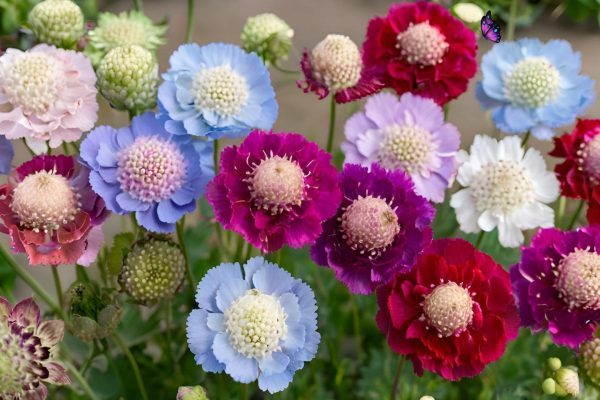
Scabiosa Varieties
Common Colors
One of the most exciting parts of growing scabiosa is the variety of colors available. Whatever your garden’s palette, there’s a scabiosa for you.
- Purple
- Blue
- Pink
- White
- Red
Favorite Varieties
If you’re looking for standout varieties, consider these popular choices:
- Dark Knight Scabiosa: A deep, almost black variety that brings drama and elegance to any arrangement.
- Triple Berry: This variety offers beautiful shades of pink and purple, perfect for adding a pop of color to your garden or flower arrangements.
Unusual Varieties
For something a little different, try the Starflower variety. It’s an unusual type of scabiosa, with intricately patterned blooms that are truly captivating. Starflower brings an exotic twist to your flower bed, making it a conversation starter.
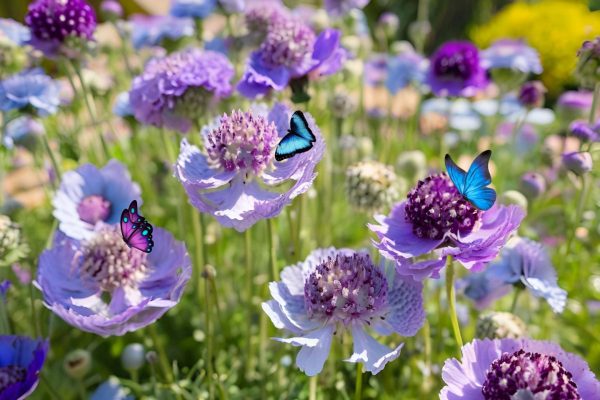
Growing Conditions Of Scabiosa
Climate Suitability
Scabiosa is best grown as a cool-season hardy annual. It loves a little chill in the air during fall and early spring. You’ll see it thrive most when planted during the cooler months, allowing the plant to put down strong roots as the weather transitions. Come springtime, the blooms will be ready to take off and will last into summer.
Temperature Tolerance
Scabiosa can survive temperatures as low as 10°F, making it a hardy choice for those in areas where winter temperatures don’t drop significantly lower. As a general rule, plant scabiosa in the fall if your area experiences mild winters. However, if you live in a region with harsher, colder winters, hold off on planting until spring.
Sunlight Requirements For Scabiosa
For the best results, scabiosa needs full sun, approximately 6-8 hours a day. If you live in a hot climate like the low desert, some afternoon shade will help your plants last deeper into summer, allowing them to retain their lush blooms longer.
Soil Requirements For Scabiosa
Preferred Soil Type
Scabiosa needs fertile, rich soil that drains well. Poor drainage can lead to root rot and stressed plants. So, working organic matter or compost into your soil before planting will go a long way, especially if you’re planting in the ground.
Best Planting Locations
Scabiosa thrives in various settings, including raised beds and containers. Raised beds, in particular, are great because they allow you to closely monitor the soil composition and ensure optimum growth conditions. Containers are another excellent option, especially if you’re short on space or want more flexibility in positioning the plants throughout the year.
Planning and Planting Scabiosa
Timing for Planting Scabiosa
When you plant your scabiosa depends on your local climate. In regions with milder winters, planting in the fall before the first frost will yield the best results. The roots will get plenty of time to establish themselves by the time warm weather arrives, allowing the plant to hit its stride come spring. If you live in a colder climate where frost is a concern, it’s best to plant them in early spring.
Starting Seeds Indoors
If you’re starting scabiosa from seed, begin indoors 4 to 6 weeks before planting outside. For those in warmer regions, sow seeds in the summer to prep for fall planting. Here in the low desert, for example, August through September is the prime time to begin seeding indoors, with transplants going into the ground in October or November.
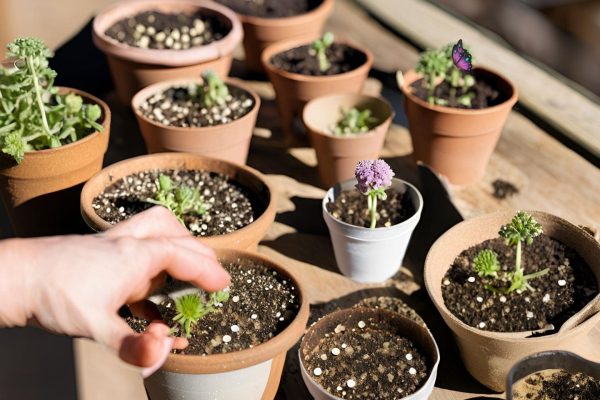
Steps to Start Seeds Indoors
Seed Germination Requirements
Scabiosa seeds require some light to germinate. Press one or two seeds onto the surface of the soil in each pot and don’t bury them too deeply. Lightly top them with vermiculite—this will allow the needed light to filter through while retaining moisture.
Germination Process
To keep the seeds hydrated, mist the surface regularly using a spray bottle rather than heavy watering. For the first few weeks, keep them covered with a humidity dome to lock in moisture, but after they sprout, remove the dome and ensure they receive plenty of light.
Seedling Care
Once your seedlings reach 3-5 inches tall, they’re ready for life outdoors. Make sure you gradually introduce them to outdoor conditions by hardening them off in a shady spot for a few hours each day, gradually increasing sun exposure.
Transplanting Seedlings Outdoors
Timing for Transplanting
Aim to transplant your scabiosa seedlings when they’re around 3-5 inches tall. This usually happens once they’ve grown a sturdy root system indoors. Best results come when outdoor temperatures are consistently moderate (not too cold or too hot).
Selecting the Planting Site
Choose a location with full sun (6-8 hours of direct sunlight), though in hotter climates, try to find a spot that will give them afternoon shade as well. Afternoon shade can extend bloom time by helping the plants stay cool when the days heat up.
Planting Distance
Space plants about a foot apart, which is equivalent to one plant per square foot if you’re using a square foot garden method. This spacing allows for proper air circulation, which helps to prevent disease, especially toward the latter part of the season.
Alternative Planting Options
Purchasing Plugs
If starting from seeds isn’t your thing or you’re looking for a lot of plants, you can purchase plugs from online retailers. Plugs are young plants grown from seeds and shipped to you when they’re ready for transplanting.
Considerations for Large Plantings
For larger plantings, consider using flower netting or other kinds of support systems to keep your flowers standing tall and proud. This is particularly helpful if you live in a windy area or expect your plants to reach their full height.
Care and Maintenance
Watering Requirements
After planting, water your scabiosa enough to help them get established. Once they’ve developed deep roots, you can water less frequently, only as needed. The plants are relatively drought-tolerant once they’re settled in, making them a great choice for low-water gardens.
Providing Support
Though scabiosa doesn’t need much pruning or care, the plants can grow tall and may need support. Use a trellis or even simple bamboo poles to keep your flowers upright. If you have a lot of plants, flower netting is a good way to keep them from flopping over and getting damaged in wind or heavy rain.
Managing Plant Growth
If your scabiosa starts to look a little overgrown in the middle of summer, give it a deep prune at the center of the plant. This type of pruning encourages renewed growth and can help extend the blooming period.
Common Pests and Diseases
Aphids
Scabiosa may attract aphids, but luckily, beneficial insects like ladybugs are usually on hand to clear them away. These partners in your garden can often handle the problem without any further human intervention.
Powdery Mildew
In overly damp conditions or with poor airflow, you may notice powdery mildew appearing, signified by white splotches on the leaves. To avoid this problem, make sure your plants are spaced well apart, and you’re not watering from overhead.
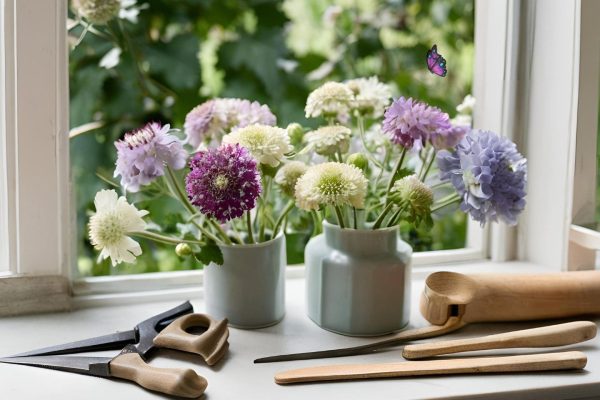
Harvesting and Enjoyment
Harvesting for Cut Flowers
Scabiosa is perfect for use in bouquets and vases. The best time to harvest is when the blooms are in the button stage, just as about a third of the bud has opened. Scabiosa blooms will continue to open once they’re in the vase, giving your flower arrangement life for up to 7-10 days. To encourage more blooms on the plant, make deep cuts near the base when harvesting, which will promote side branches to form.
Enjoying in the Garden
If you’re letting the flowers bloom freely in your garden, don’t forget to deadhead. This means cutting dead flowers off as soon as they’ve started to fade to encourage new ones to grow. Leaving old blooms on the plant drains its energy into creating seeds, which you don’t want if you’re aiming for consistent flowering.
Promoting Continued Blooms
To keep scabiosa in bloom as long as possible, you need to keep up with deadheading. While you could let the spent blooms form seeds, keep in mind that many annual varieties are hybrids and their seeds won’t grow true. Instead, clipping off dying flowers will encourage the plant to continue producing new blooms, giving you vibrant blossoms for months.
General Tips for Success
Understanding Bloom Duration
In warmer climates like the low desert, scabiosa blooms from early spring through July. If you live in a more temperate area, expect them to continue throughout summer, as long as it doesn’t get too hot or cold for too long.
Enhancing Garden Aesthetics
Scabiosa is an ideal filler flower in bouquets but can also steal the show all on its own. Whether you decide to enjoy scabiosa blooms in vases around your home or in your garden, you’ll love their whimsical, delicate appearance and the flurry of pollinators they attract.
Additional Resources
How to Find Frost Dates
Not sure when your first frost date is? Search online tools to determine it by entering your zip code. Knowing this date is key for planning your fall plantings.
Further Reading and Videos
For even more detailed tips, consider checking out video tutorials and further reading. Many garden experts offer profound insights to make the whole process easier.
Community Support
Trying something new like growing scabiosa can seem daunting at first. Don’t be afraid to reach out to fellow gardeners for advice or to share your experiences. You’ll find gardening communities full of passionate growers eager to share and learn together.
Scabiosa is an easy yet rewarding flower to grow, whether you’re looking for cut flowers to bring indoors or want to create a haven for pollinators in your garden. Follow these tips, plan ahead, and enjoy months of beautiful, butterfly-filled blooms. Now’s the perfect time to add scabiosa to your garden lineup!
